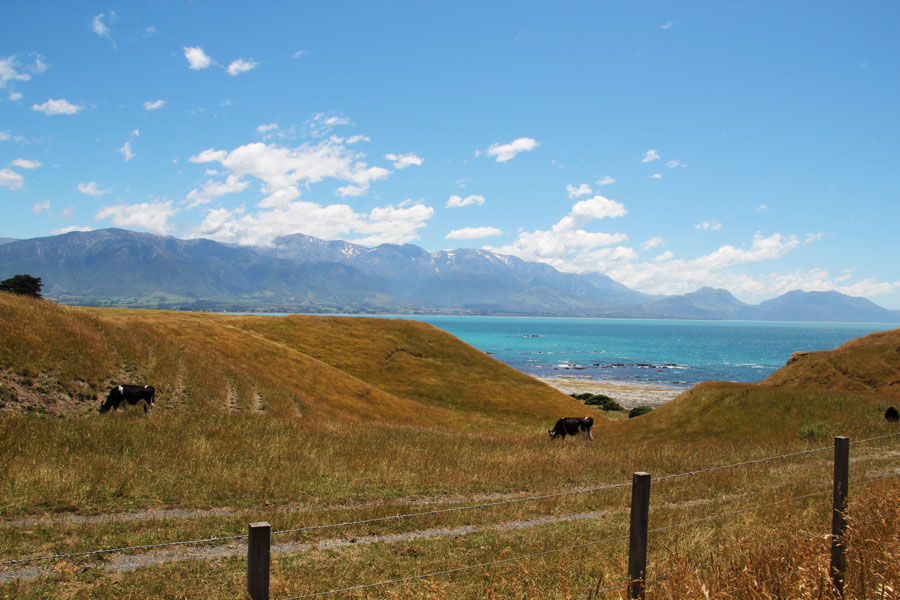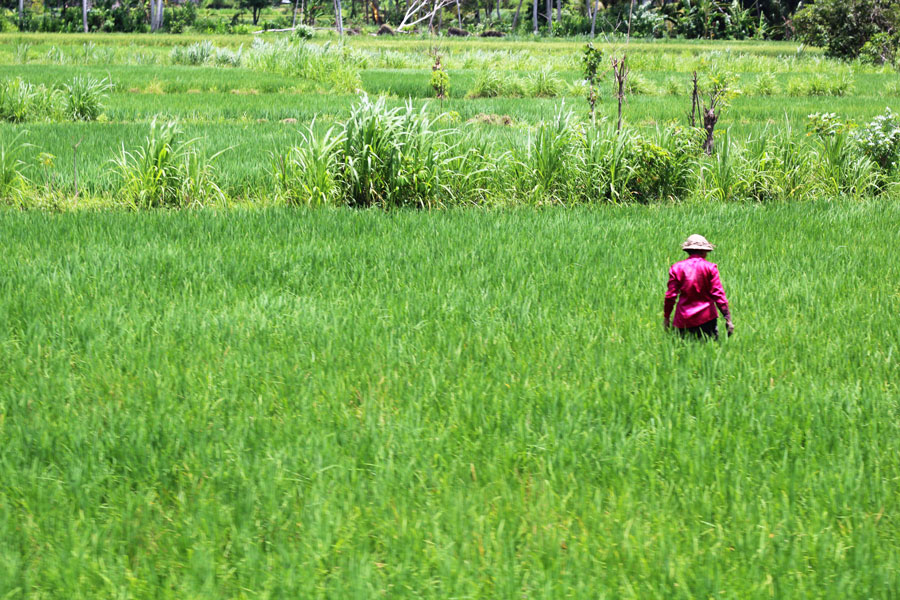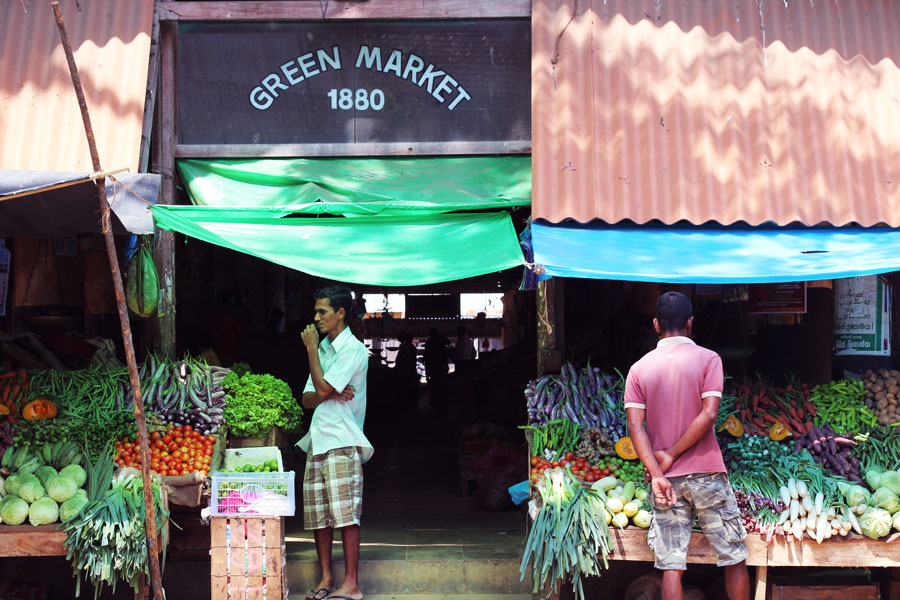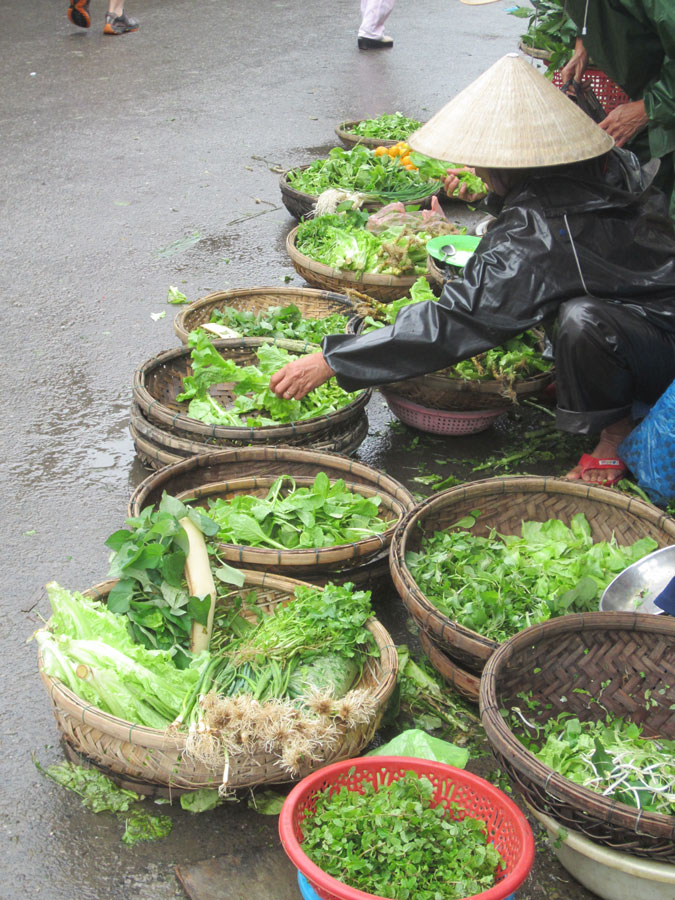LOCALISM: Looking Afar For Best Practice Local Eating

The idea of Localism is nothing new, with arguments against globalisation being furiously fought by the manufacturing sector for the last half century and more. So the question remains – is localism and the local food movement nothing more than a form of xenophobia? Or are there reasons why buying locally, supporting local farmers and eating seasonally is better for you, your pocket and the environment?
The easy answer is to say yes to all of the above – or at least most of the above. Eating locally, wherever possible, in theory is a no brainer. Why would you eat a tomato from Italy if you lived in Australia, where you can get tomatoes year round due to the fact that the north and the south of the continent have essentially opposite seasons? But then again, when it comes to canned tomatoes the varieties grown in the volcanically rich (Australia has almost no volcanoes) soil around Mt Vesuvius are world renowned for tasting the best when canned. Or maybe you live somewhere else that has different seasons and growing conditions?
It can all get a bit complicated really. In what instances should you be looking for locally produced food? Again the simple answer is to tell you to buy anything that is produced locally. The philosophy behind this is to say that if a farmer has figured that it makes economic sense to produce something locally then it must make sense to buy it locally. This of course is not always true as we shall see.
The Story of American Beef
I’ll never forget a graph I saw in an Adbusters Magazine many years ago. It depicted US imports vs exports of beef from a certain year – I can’t remember which now (sometime around 2003 I think). From memory the graph illustrated that the US that year produced about 13.6 billion tons of beef and exported about 13 billion tons of it – mostly to Europe. It also showed that the US imported just over 13 billion tons of beef, mostly from China. So we have a situation where a country imports almost the same amount of a product as it also exports.
Of course there are very valid reasons for this kind of zero sum game. The US could sell their beef on the global market for a much higher price than they could buy it from other countries. This would leave them with a positive monetary trade surplus in the commodity of beef. An enviable situation for most countries.
World trade and globalisation are, of course, all about the idea of competition, trade and the ‘free market’. So if the US can produce ‘high quality’ beef that discerning customers in Europe will pay good money for; at the same time as being prepared to buy and eat ‘lesser quality’ beef from China, for example. Why not?
Of course it doesn’t seem the most sustainable practice having almost the same amount of beef being shipped from the US as they then need to ship in from other countries. But if a country can out-compete another country on the global market for either quality, price or both then should that country stop producing that commodity altogether? Does this apply to different regions within a country?
The answer is not necessarily so. The more competitive country or region cannot likely produce enough of that product for everyone in the world. And of course things like local markets and their demands (some cultures eat slow cooked beef, for example, lessening demand for leaner cuts of meat), proximity to markets (it may make sense to send Beef from the US to South America but not from the US to Europe, for example) and the efficiency of production within that country or region (which is dependent on climate, technology and expertise).
As you can see it is all very complicated and confusing. A reason perhaps why it is easier for many people to err on the side of localism or conversely, taking the attitude of not caring about the matter at all. But don’t despair. This was only the first of three distinct stories laid out in this article with different stories in relation to localism. But if you look closely they all have similar outcomes. And at the end will hopefully give you some clarity on the topic and leave you more informed than before.
The Story of New Zealand Lamb
New Zealand has nearly always been a great producer of lamb, with favourable farming conditions and plenty of available land. However, in the early 1980’s the New Zealand government stopped subsidising the production of lamb.
As one of the country’s main exports this posed a significant problem to farmers. You see lamb (and in fact many food commodities) are subsidised in many countries that New Zealand tends to export their lamb to. So the lack of subsidy meant that New Zealand lamb was at risk of being too expensive on the world markets for other countries to buy, while farmers from other countries were being subsidised by their own governments.
This put the New Zealand lamb industry at a significant disadvantage. But, perhaps surprisingly, led to an increase in efficiency, quality and investment in the New Zealand lamb industry. Very quickly New Zealand lamb became a brand in itself, which exporters started clearly labelling so consumers worldwide knew that they were buying a top quality product. Research showed that New Zealand lamb had a smaller ecological footprint than locally produced lamb in the UK and US even taking into account shipping the product halfway across the world.
What this all means, is that New Zealand lamb is so far ahead of everyone else in terms production efficiency, suitable climate and world-leading farming practices that there is a strong ecological and idealogical argument to buy New Zealand lamb no matter where you were in the world.
But does this mean that the rest of the world should give up on lamb farming and buy their stock from a far off country in the Southern Hemisphere? Well it certainly means there may not be too much harm in doing so. But the fact remains that New Zealand can’t produce lamb for the whole world, even if that is what everyone wanted. And besides there is plenty of room for countries like the UK to improve their farming practices to compete with New Zealand. The climate is certainly similar enough.
So what can we take from this story? That buying non-local produce is not always bad. That a committed, well funded and well researched industry can make massive strides in production efficiency – enough to offset environmental shipping costs. This will only apply to certain products, particularly ones with a longer shelf life of course, which can be shipped instead of air freighted. And New Zealand’s world leader status in the production of lamb may only turn out to be a short term thing. New Zealand’s lamb farming efficiencies may work to lift the level of production world-wide – which can only be a good thing.
But does free trade and lack of government support always work in this manner? As we shall see Australian rice has taken a very different route.
The Story of Australian Rice
It wasn’t until the 1920’s when Australians started irrigating on a wide scale, that rice started seriously being grown in Australia. But by the 1990’s scientists started realising that the large scale irrigation in the north of the country was drastically affecting the river flows in the south of the country. These were rivers that were the lifeblood of plants, animals and humans across the dry continent. Fights over water-rights have ensued ever since and become quite a big political issue.
To this day Australia is a large producer of rice. They export a fair amount to countries like Japan and have very strict policies on the importation of rice grown overseas. In recent years, despite over a decade of drought where rice production all but dried up, it was often impossible to find any brown rice on supermarket shelves – or at least it was very expensive to buy. This was due to the fact that barely any was being produced locally as a result of the drought and no one was allowed to import any brown rice from overseas under the provisor that it was considered a ‘seed’ that could harm the local industry. Brown rice can sprout into a plant in case you were wondering.
So here we have a situation where there was plenty of rice being produced overseas. In countries from Asia and the Americas where water is plentiful (in case you hadn’t gathered, rice is basically gown on flooded plains). Furthermore, these are often developing countries that heavily rely upon the export of rice and have perfect growing conditions – Thailand for example, is the second largest exporter of rice in the world and heavily relies upon rice exports in their economy. This compared to Australia, where irrigation is causing environmental destruction and huge problems for farmers and wildlife.
The question remains in this case whether buying local is the better thing to do? Surely supporting developing countries with ideal growing conditions is the right thing to do here?
However, the story doesn’t stop here. Since the drought – which is now considered over (for now) – some Australian rice growers have switched to growing varieties of ‘dry-land’ rice which do not need to grow in water logged fields. There is also a biodymanic rice grower in NSW that I have spoken to, who did tests on the water quality that came from his farm after the rice season had ended. He found that the water was actually cleaner than the water in the river systems, due the clean nature of the biodynamic farming method. Unfortunately he was not allowed to put his water back into the river system due to government legislation made to stop (non-biodynamic) farmers putting polluted water (from petrochemical fertilisers and pesticides etc) back into the river systems. Suffice to say, there is currently some really interesting developments happening with rice production in Australia and gaining water efficiencies.
And one last thing that should be mentioned is that Australian rice farmers have been found to be some of the most efficient farmers (i.e. they get more rice per square hectare) in the world. So this leaves us with a situation where rice is not the best crop to be growing in the Australian climate. There are potentially better places in the world to be getting rice from. But through protectionism the Australian government has kept the local rice industry afloat through tough times only to currently have some of the best innovation in the world.
How far do you push localism to not only protect the local economy but also cut down on environmental impacts. Of course all of the above examples used here have been for food commodities that can be stored and shipped around the world with very little or no loss in quality or nutrition. If you consider fresh fruit and vegetables, for example, it is a completely different picture.
Apples that come out of storage have less nutrition and often are tasteless and floury. Conversely, apples are only in season (assuming you live in an apple growing country) for a few months a year. You may prefer to get apples from across the world that are only a few weeks old as opposed to local ones that have been kept in storage up to six months.
And this is really is what the whole debate is all about. Localism is about shunning out of season produce in order to get the freshest, tastiest and most nutritious food. This coupled with protecting local jobs and supporting farmers. But how far do you take this philosophy?
The Moral of the Story
Nothing really sums up the (albeit confusing) moral of the story better than a critique of a recent piece from NPR about local food and how it doesn’t pay. To summarise, the piece is about how small scale farms cannot compete with large scale farms. This is largely because small farms will struggle to produce enough income for even one person, let alone a family.
Which brings to bear an important point. Small farms struggle to compete against large farms. They cannot match the research, investment and network that large scale food production can drum up. Not to mention the low prices that large farms can sell at.
In fact, in many cases it is this big business that drives efficiencies in production including occasionally better environmental outcomes. This coupled with the Green Revolution – not a revolution in environmental practices, but a scientific and industrial revolution through the 60’s which more than doubled food production and has significantly contributed to us being able to feed the world – the situation starts to look quite dire for small local farms using sustainable practices. Because the Green Revolution was not only about producing higher yielding cultivars but also using inorganic fertilisers and pesticides on a large scale.
This is why it is also this big business and large scale farms that significantly contribute to polluting the water-ways and using large amounts of inorganic fertilisers (petrochemical based) which contribute to global warming. Not to mention some practices where some commodities are shipped back and forth across the world to do various processing on the product. An example of this is Bolivian quinoa, which is grown in Bolivia and then shipped to Europe to be washed with water (to get rid of the soapy tasting saponin off the outside of the grain) and then polished. The quinoa is then sent elsewhere around the world, including back to South America! This is a common occurrence in all kinds of manufacture around the world.
And here is the critique of the NPR article. Because what it doesn’t mention is the advantages of buying locally from large scale farms. And consumers that are prepared to pay extra for locally prouced small scale production. And this really is the crux of the issue.
Farmers that grow to export, as is the case in the aforementioned example of beef farmers in the US, often almost solely focus on international markets. Instead of supplying the local markets first and sending the surplus overseas. They send their exports first and if there is any surplus they may sell to local markets.
This has two affects. It means that farmers the world round are looking for the best price for their products no matter the environmental cost, which in turn drives up local prices due to the lack of over-supply. Which is why you end up with the seemingly ridiculous situation where the US imports the same amount of beef as it exports. The Chinese beef farmers get a better price for their beef from the US than they would from the local Chinese market. But the Chinese still need beef, so they either produce more of their own or import it from elsewhere. Either way, prices are often driven upwards in the long run. Even in the US, eventually, as the cycle completes. Either that, or there becomes a massive over-supply of beef and then prices plummet sending farmers into bankrupcy. This situation happens quite often. Regardless of the outcome, it can become a bit of a false economy and requires massive investment to compete on the global stage.
Going back to farmers markets – there is a big plus to supporting local farmers. Even though those farmers may not be able to make a complete living out of just selling at markets, they certainly make much larger profits. When they sell their produce at markets they get all of the money that you pay for your produce (less their production costs).
While those that sell to supermarkets often get squeezed to sell their produce sometimes even below the cost of production in good growing years. Yes that is right. If there is a good growing year the farmers will often lose out due to over-supply. Last summer in Australia, for example, some strawberry farmers who had one of the best season on record ended up not even harvesting their crops due to such over-supply in the market that they weren’t even getting enough money for their strawberries to cover the labour cost of picking them! Perhaps a case for non-localism and sending their strawberries overseas?
The supermarkets then put a huge mark-up on produce and sell it to the consumer at much higher prices than you would often pay at a farmers market. The end result being that any extra profits tend to go towards the supermarkets and the importers/exporters rather than the farmers. This is not true of the produce that they sell at the farmers market.
Another key factor to mention, which is slightly covered in the NPR article, is that small scale farms can gain investment efficiencies where they can grow things on a small scale with very little investment (i.e. a spade or two vs multi-million dollar machinery that large scale farms need to invest in). This is a situation where small scale farms essentially sell their produce for supplementary income instead of primary. Buying from local community gardens and small farms that have other sources of incomes can make economic sense.
So where does this leaves us? Well localism by its very nature does pay off in some way or another. Whether it is learning to appreciate the higher quality (and perhaps the higher price) of local produce. Realising that it is farmers that need the most support and that having any kind of relationship with them has the potential to benefit both you and them. Better that than them chasing top dollar from elusive global markets. And in the long run your support of local farmers will often result in them becoming more efficient and competitive. But only to the point where you aren’t letting local farmers live in an overly protected world of localism.
But there are also other factors to consider. If a region or country is well renowned and ideal for growing something then it is likely not a big deal to buy a product from there rather than a similarly local variety that is over-priced and maybe of lesser quality. For example, you may rather buy a tropical fruit from the other side of the world rather than one produced locally under lights, indoors and using a lot of inorganic inputs to achieve similar results. Or you may rather to choose to not eat such food as many ardent localists believe is the best course of action.
In summary, it can definitely be said that localism is by and large a great philosophy. There are however, certain climatic, geographical and economic constraints around this which are complicated and varied. In the end, food production and trade are important global issues that need to be understood and are necessary in many cases. If you can buy local and it makes sense to do so in terms of quality and price then you should definitely do so wherever possible. There is nothing wrong with eating seasonally either.
If there is any way to grow your own, set up local community gardens, or buy from local community gardens then this changes everything. It makes perfect sense. Even better, cycle to your local farmers market as much as you can and enjoy the relationship you have with your farmers. The more you know about your food and the fresher it is the better it will taste! But sometimes that tropical mango or piece of chocolate is just too tempting not to buy top quality produce from halfway across the world.






